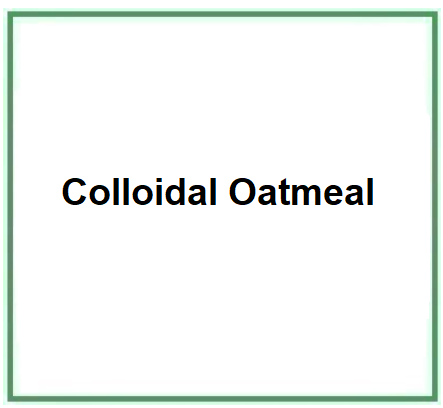Colloidal Oatmeal is a product of natural origin, derived from oat grains.
The name describes the structure of the molecule:
- "Colloidal" indicates a suspension of finely ground particles in a medium, where the particles don't easily settle.
- "Oatmeal" refers to ground oats, which are obtained from grinding oat grains.
Description of the raw materials used in production and their functions.
- Whole Oats. The primary source from which colloidal oatmeal is derived. Oats have soothing, calming, and anti-inflammatory properties for the skin.
- Water. Used in the cooking or grinding process.
Step-by-step industrial synthesis.
Whole oats are cleaned to remove impurities and contaminants.
- The cleaned oats are then steam-cooked to make the grains softer and facilitate the grinding process.
- Post-cooking, the oats are finely ground in a specialized mill. During grinding, the oats become a very fine powder, akin to flour.
- The resulting powder is then sifted to ensure consistent texture and to remove any larger particles.
- The ground oatmeal can be further treated or purified to meet specific cosmetic or pharmaceutical industry requirements.
It appears in the form of a white powder.

What it is for and where
Medicine
Phytochemical analysis of oats revealed phenolic compounds with antioxidant and anti-inflammatory activity (1) and there is evidence that oatmeal could induce some beneficial changes in serum lipids, oxidative stress by improving cardiovascular disease risks (2).
Cosmetics
Abrasive agent. It contains abrasive particles to remove stains or biofilm that accumulate on the stratum corneum or teeth. Baking soda, kieselguhr, silica and many others have abrasive properties. Peeling or exfoliating products used in dermatology or cosmetic applications contain abrasive agents in the form of synthetic microspheres, however these microspheres or abrasive particles are not biodegradable and create pollution in aquatic ecosystems.
Absorbent. Absorbs substances dispersed or dissolved in aqueous solutions, water/oil, oil/water.
Bulking agent. It regulates the water content, dilutes other solids, can increase the volume of a product for better flow, acts as a buffer against organic acids, helps to keep the pH of the mixture within a certain level.
Skin protectant. It creates a protective barrier on the skin to defend it from harmful substances, irritants, allergens, pathogens that can cause various inflammatory conditions. These products can also improve the natural skin barrier and in most cases more than one is needed to achieve an effective result.
Commercial Applications
Cosmetics. Colloidal Oatmeal is frequently used in cosmetic products for its moisturizing and soothing properties. It can be found in creams, lotions, and skincare products, especially for sensitive or irritated skin.
Bath Products. Colloidal Oatmeal is also used in bath gels, bath salts, and other bathing products for its soothing effects.
Skin Treatment. Colloidal Oatmeal is acknowledged for its anti-itch properties and is often recommended for relieving skin irritations such as eczema or psoriasis.
References_____________________________________________________________________
(1) Pazyar N, Yaghoobi R, Kazerouni A, Feily A. Oatmeal in dermatology: a brief review. Indian J Dermatol Venereol Leprol. 2012 Mar-Apr;78(2):142-5. doi: 10.4103/0378-6323.93629.
Abstract. The purpose of this review is to gather and summarize in vitro, in vivo, and clinical trials on oatmeal preparations and their uses in dermatology. Literature searches have been carried out to collect in vivo and in vitro studies as well as clinical trials on this subject. The results suggest that oatmeal possesses antioxidant and anti-inflammatory properties and its administration is effective on a variety of dermatologic inflammatory diseases such as pruritus, atopic dermatitis, acneiform eruptions, and viral infections. Additionally, oatmeal plays a role in cosmetics preparations and skin protection against ultraviolet rays. Although some promising results citing the use of oatmeal to treat numerous dermatologic conditions have been found, the complete efficacy of oatmeal has not been sufficiently explored. This paper proposes accurate and useful information concerning the use of oatmeal in clinical practice to dermatologists.
(2) Xu D, Pan D, Liu H, Yang C, Yang X, Wang X, Liu F, Feng M, Wu Q, Shen Y, Yang L, Wang S, Sun G. Improvement in cardiometabolic risk markers following an oatmeal diet is associated with gut microbiota in mildly hypercholesterolemic individuals. Food Res Int. 2022 Oct;160:111701. doi: 10.1016/j.foodres.2022.111701.
![]() Colloidal Oatmeal
Colloidal Oatmeal 


